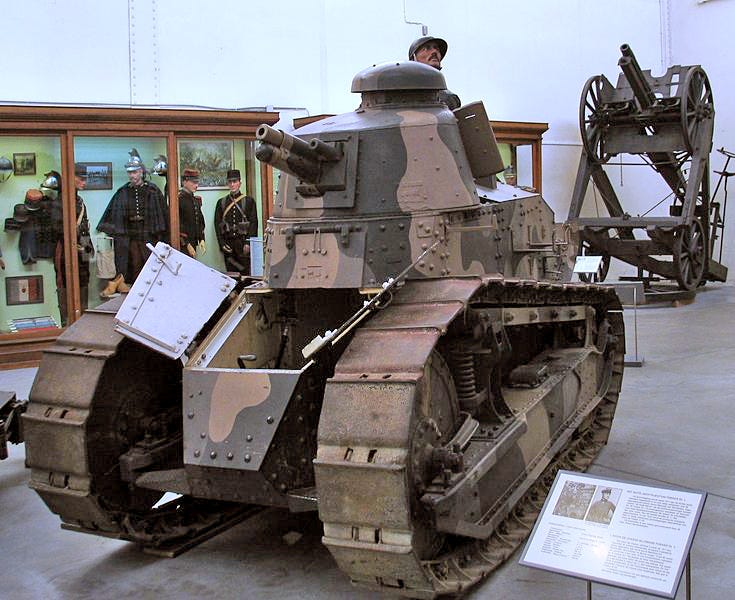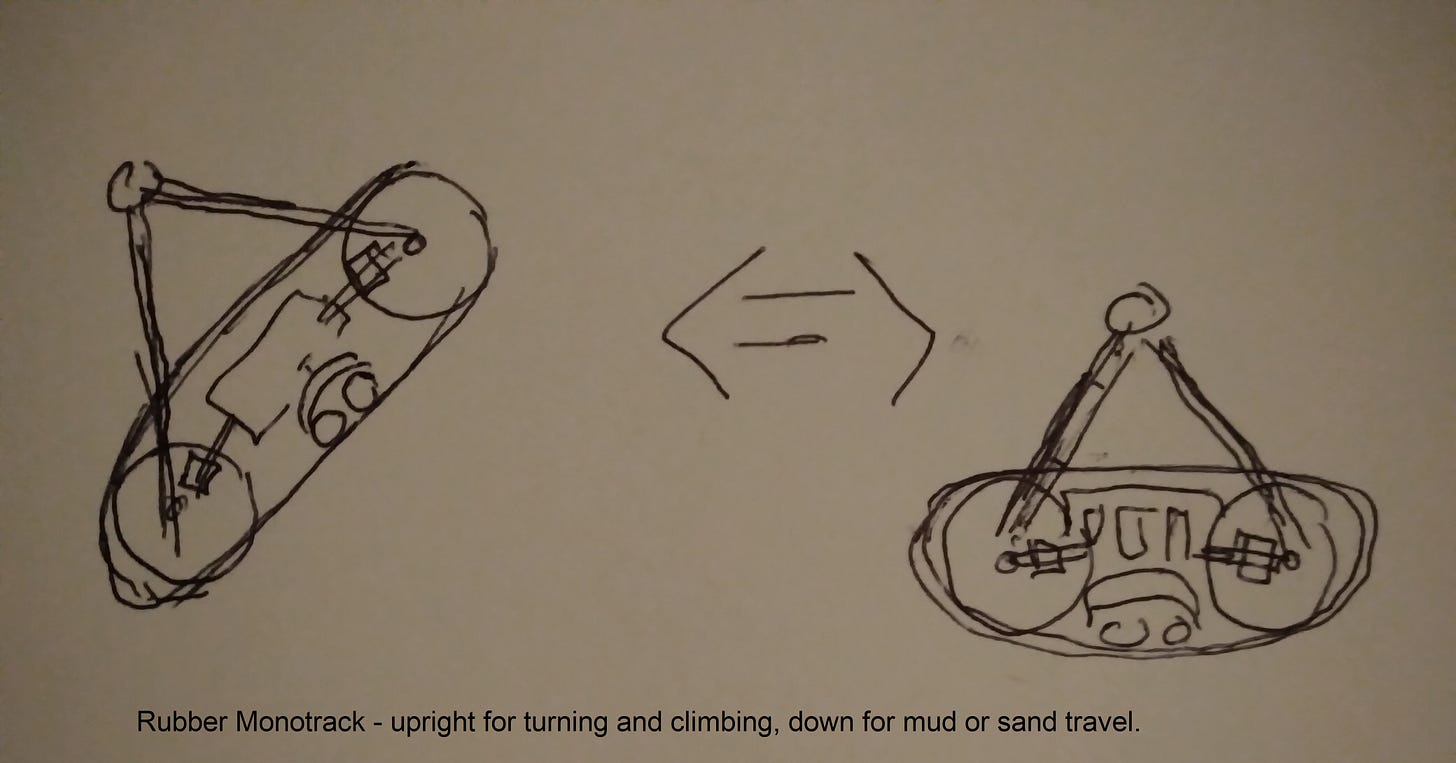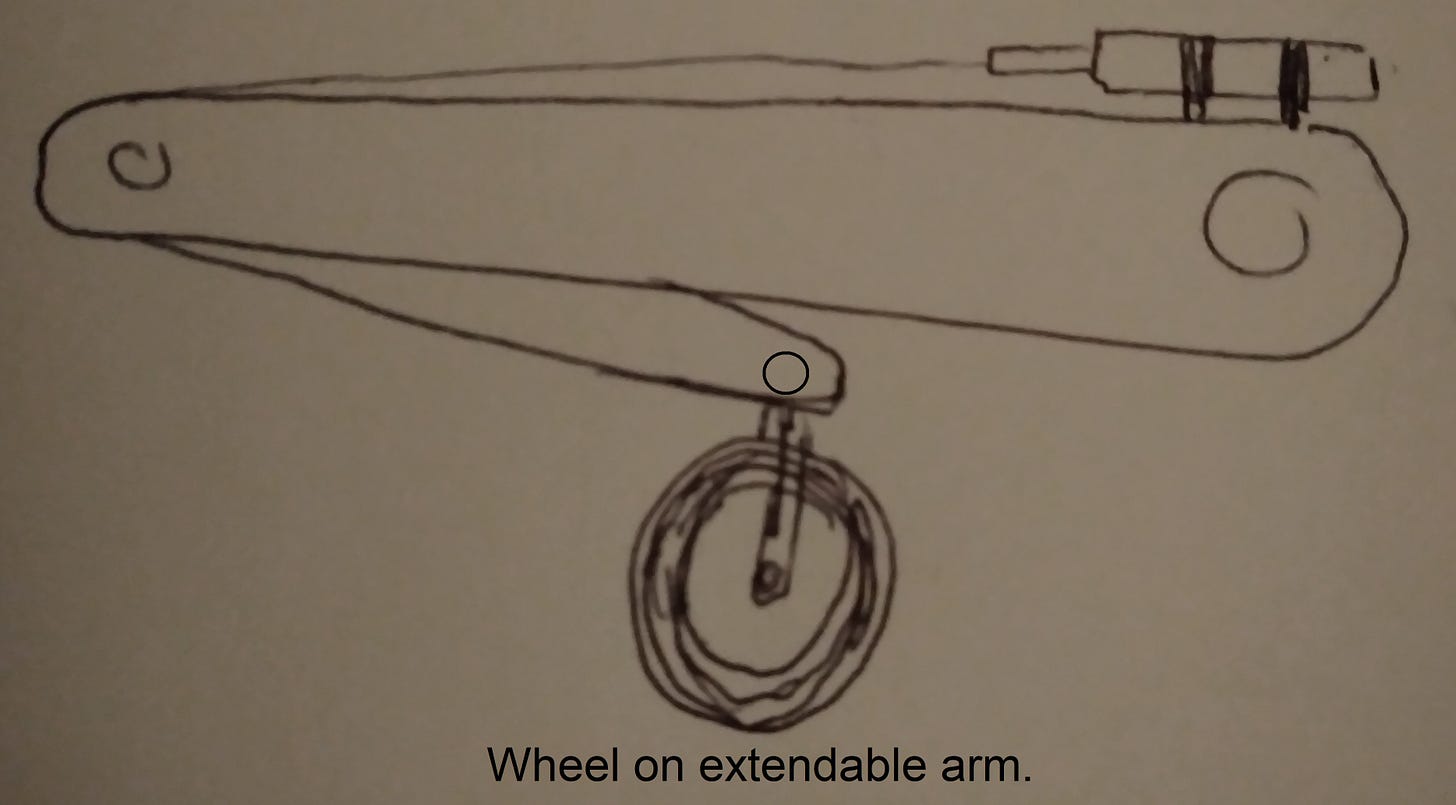The Neo Cavalryman
This is a follow-up to my The Main Battle Tank is Dead post. In that post I imagined the MBT would be replaced by mass tankette-drone charges, the vision of the 1920’s finally fulfilled. Upon further reflection, these tankettes would have a human commander for the following reasons:
1. Land navigation and movement is harder than air navigation and some guidance and immediate override capability is needed.
2. Control via comms is more difficult to maintain close to the ground because of obstructions to the line of sight. In a battle zone, the equivalent of cell towers to get good coverage would be quickly destroyed. Ground drones would also be in constant proximity to enemy electronic warfare efforts rather than just during the dangerous part of a sortie.
3. The ability to handle enemy tricks and spoofs is needed. It seems this is true even of air drones which need a man in the loop. This is even truer on the ground, which is a tricker environment.
4. Ability to coordinate into part of an integrated effort. The ground vehicle or soldier is acting as part of a team, and the coordination needs to be spot-on. The UAV can do meaningful work with solo sorties, although some ground coordination is needed.
For similar reasons, it is best practice, at least for small drones, for the operators and controllers to be close to where the drone is being used.
The current model of drone deployment is to have support vehicles - command and control, carriers and maintenance, and other vehicles to transport the operator and maintenance team. With tankette-drones capable of carrying a soldier, a lot of this would go away. Spare parts and things could be strapped on, tank style. I expect that big vehicles will be big targets in the near future battlefield, perhaps up to 10-20 miles behind the line of contact. Big in either size or for the IR plume of a combustion engine generating hundreds of horsepower. I’m assuming also the density of the front lines will be a little less than what we see now because combatants will have artillery on the scale of the Russian Federation but with the multiplying effect of NATO’s smart enhancements (made cheap via mass production and improvements in electronics.) Instead of a line of contact, it will be more of a zone, increasing the importance of mobility. (This is per the law that as firepower goes up, soldier density goes down to avoid unnecessary casualties.
What does our tankette-steed look like? Here are my speculations and the associated reasoning.
Mobility
The starting point is a motorcycle/dirt bike. Let us look at the tankettes of WWI and the early 1920s and see what other mobility requirements they had. The FT-17 was the most successful of these that was extensively used in combat and found up to the task.
What we notice is that it was tracked, with high ground clearance in the front. It also had a sled/tail. The track is needed to have low ground pressure so that it doesn’t sink into mud and get stuck. The purpose of the tail is to extend its trench-crossing capability and give it some extra ground clearance in reverse.
Our tankette-steed is not going to be so heavily armoured as this, so we may dispense with the track. The goal is it should be light enough that a trooper can right his steed that has fallen over, meaningfully assist it over obstacles, and that several troopers can lift one, at least with the aid of litter poles, to ease transportation on/off the truck, and over difficult terrain. A disabled one could be towed by another tankette-steed back to the maintenance pool.
Requirements:
Light: A few hundred pounds.
Can cross mud.
Can cross a standard trench.
Some obstacle climbing ability. The FT-17 has a big wheel in the front to climb. Ideally, it would be able to go over walls as well as scramble up a boulder-filled arroyo.
Taking the dirt bike as our starting point, some ideas to enhance mobility to meet requirements:
1. The FT-17 has a big wheel in the front, and a sort of anchor in the back, perhaps we could do a big wheel and the other wheel is smaller but on an arm the can stretch or telescope to cross gaps and navigate obstacles.
a. The front wheel can be large for good ground clearance and have a large tire that can quickly inflate/deflate itself to switch between gripping surfaces or traveling fast.
Instead of this big air wheel, it may be better to have a two-wheel rubber mono-track, perhaps with a small boogie in the middle. Maybe this track could swivel from climbing/high-speed mode (one wheel on the ground the other wheel up to clear obstacles) to mud mode (the track flat on the ground for lower ground pressure). A mono-track is difficult to steer, which will be accomplished with the outrigger wheel, and maneuverability is enhanced when less of the track is on the ground.
b. One wheel can be on an extendible arm that can stretch out to cover crossing a gap.
c. All wheels drive.
d. Electric motor drive - the near instantaneous torque of electric motors will give us superior acceleration in a tight spot, can quickly lower torque if sensors detect a wheel is slipping, and can make the arm wheel just be still when it is being used as a climbing attachment. This could be battery + compact diesel running constantly at optimal rpm, or fuel cells if a cheap non-hazardous one could be developed.
Or other possibilities:
2. Give a dirt bike enhanced jumping capability. The suspension system could be beefed up and powered so that it is capable of jumping the bike over obstacles, be it trench, c-wire, wall, or boulder. This seems somewhat dangerous.
2a. In line with the above we propel the dirt bike with a small jet or rocket engine instead of motors. I doubt the thrust-to-weight ratio mounted could be made much more than 25%, but 25% would noticeably improve the jump capability both on the way up and landing afterward if it could vector to vertical. The vector control could be used to keep this upright during a jump.
3. The Hobbarts funnies solution: Have an engineer-trooper within each patrol or troop, whose bike(s) can deploy ramps or other things for everybody to cross over.
Survivability
The classic tankette was sufficiently armored for all-around protection against rifle rounds. This one takes more of an aviation approach to save on weight. The A-10 is the classic example with spot armor and lots of built-in redundancy of unarmored sections. Instead of an armoured NBC crew compartment, the trooper has personal armor - a suit instead of a shell, so he can use it dismounted. There might be a forward armor screen on the vehicle to give him protection up to a rifle round from that direction. Other point failure components will be identified and up-armored to whatever standard is feasible within the weight constraints.
Redundancy - There are two motorized wheels, if one is disabled it can still move. It will use a 40 V bus that is networked (Like the Tesla). If a wire is shot off, it is only part of a network and the power and controls will route through another way.
The trooper will need to wear appropriate gear for crashing, like dirt bike riders - an enclosed helmet, and crash protection on elbows and joints. An enclosed helmet means that it can be designed to give some protection for the brain against explosive blasts - one of the main causes of PTSD. The overall effect would be rather insect-like. Or perhaps like some cavalrymen in the past - lobster-like.
I’m assuming there are better defenses against aerial drones than at present - perhaps a linked system of sensors on each bike that can hear, and see the drone coming, with an AI trained to integrate the feeds, spot, and triangulate the threat. Or perhaps a small radar good enough to track small Styrofoam drones will be developed. When spotted a a fire control system would give firing data to the patrol’s machine guns or large shotguns to shoot it down if it gets close. Or perhaps an ability to launch counter drones to intercept them or whatever bombs might be dropped.
Lethality
WWII experience showed the danger of overtaxing personnel - in this case, driving while manning weapons is clearly too much. The bike will have an AI system and drive itself, responding to voice or other commands of the trooper. The trooper will be able to take direct control or command the AI to enter into various modes for tricky situations such as navigating various terrain hazards. Possibly there might be some AI-enhanced semi-direct control modes.
Cavalrymen typically have a couple of different weapons for different purposes, and it would be no different for our modern iteration. A Ma-Deuce or full-power grenade launcher could be used, mounted onto the bike. You could build in a mortar or a recoilless rifle for the heavy weapons component of a troop.
For NATO this would be the Carl Gustoff recoilless rifle. The mortar could be part of a small-scale aerial drone system, used for recce or indirect fire. Some sort of anti-drone system would also need to be in place, if not on everyone, perhaps as part of every troop or patrol. Presumably, it would be a weapon that could also be used against ground targets as needed - perhaps a dual or quad M2 linked to some tracking system, maybe just a big shotgun. Most SPAAG that have been dusted off and used in Ukraine are very effective at direct fire against enemy positions.
They would also have smaller weapons for dismount operations such as clearing a trench system or a structure. Small ‘offense’ grenades and carbines, or short-barreled shotguns would do.
Command and Control
Autonomous use - Unlike horses, these mounts could fight by themselves - as a diversion, or to provide suppressing fire, as sentries, or so forth. The trooper could dismount, move forward crouched, and call for fire from his mount, either to suppress potential hostiles or to strike a target that his dismount weapon(s) might have problems with.
The trooper would have short-range radio and smart glasses incorporated into his headgear. Smart glasses can show information, orders, what things look like on the other side, markings where noise has been heard, or from other troopers in the organization. Can show projected shot paths, both from dismount weapons and weapons on his mount. Perhaps there would be a method for him to mark a target and then his on-board computer to fire the weapon when in the course of manually aiming it he has moved it into the correct alignment. This last means the weapon need not be fired from the shoulder to sight it, and we may also resurrect the old WWI idea of firing from the hip for better recoil management. You see this style also in ‘80s movies because it looks badass, but it’s hard to aim a weapon that way.
Conclusion and Further Reading
If this concept has any validity the actual execution of it would be trimmed down and simplified from what I have here. Function creep is what happens when you don’t know what the essential essence of something is.
For further reading see this substack post by anarchonomicon. The main difference here is I’m considering that these would be fairly useful not just for battlefield mobility, but also for assault - granted I would expect the trooper would be dismounted during an attack, so these are strictly speaking dragoons, not cavalry.








